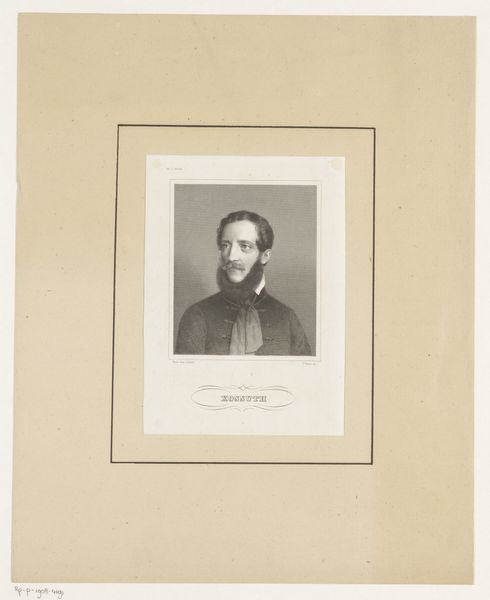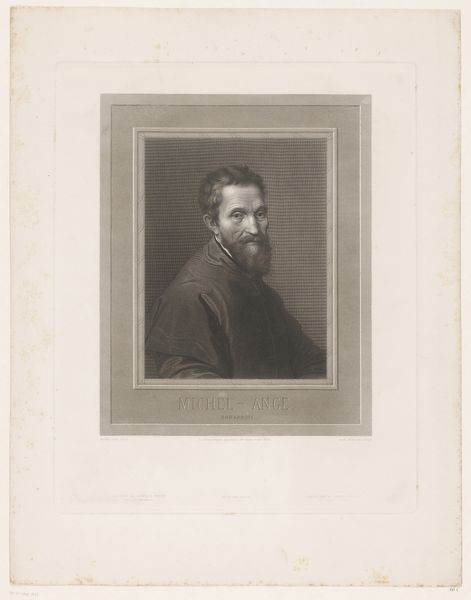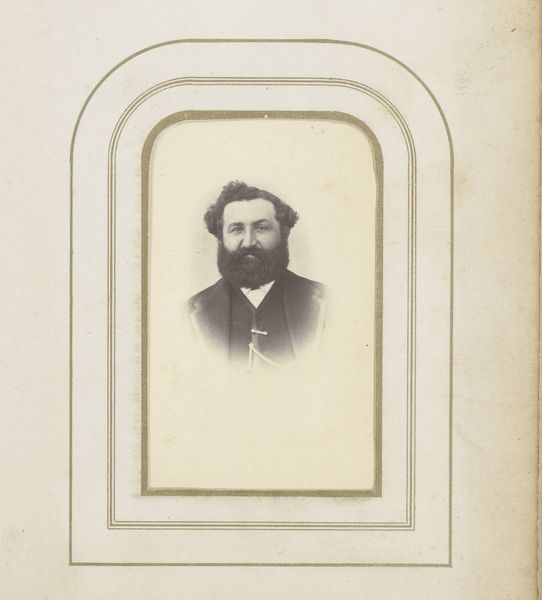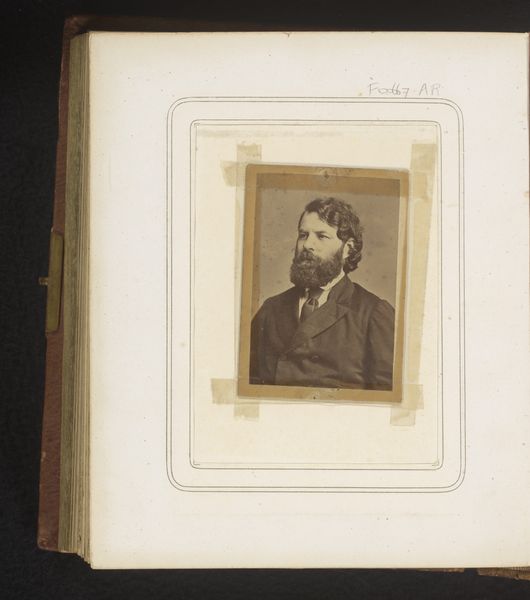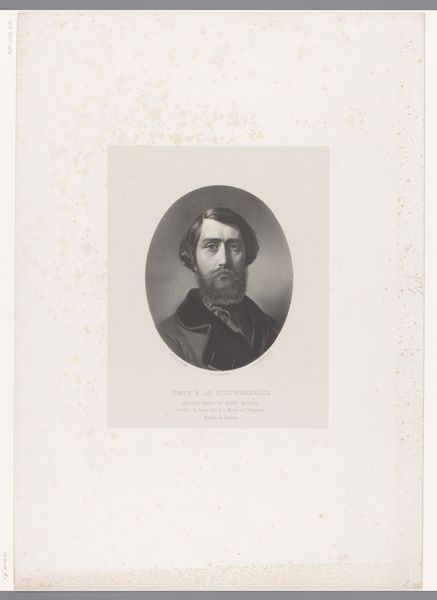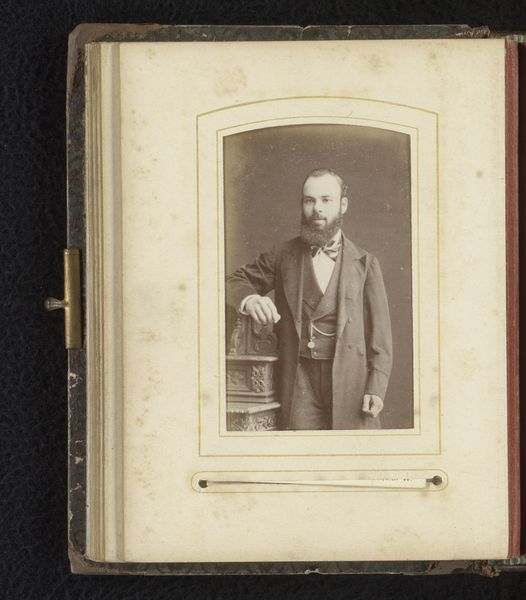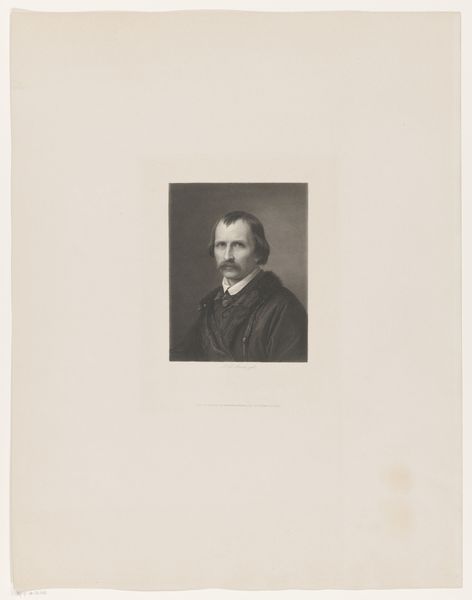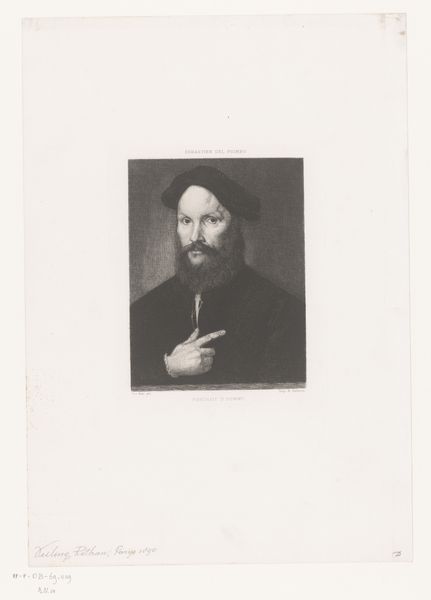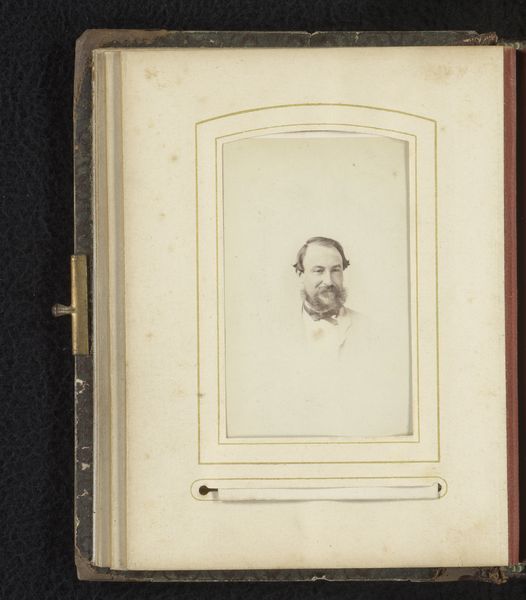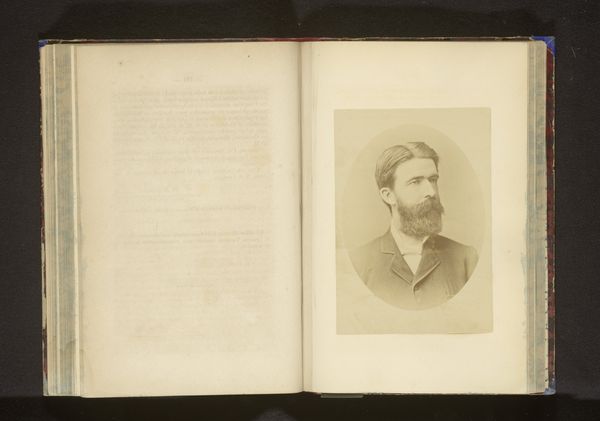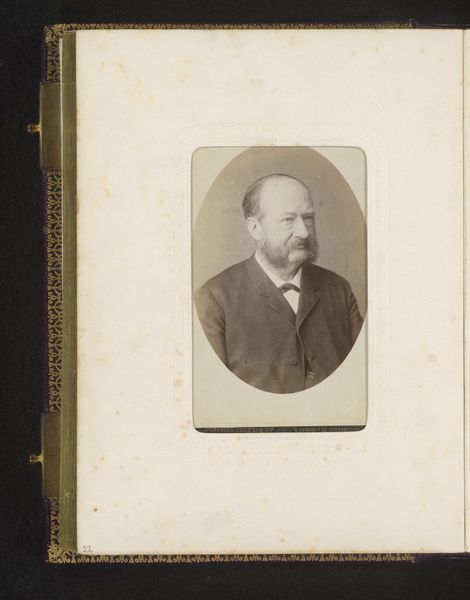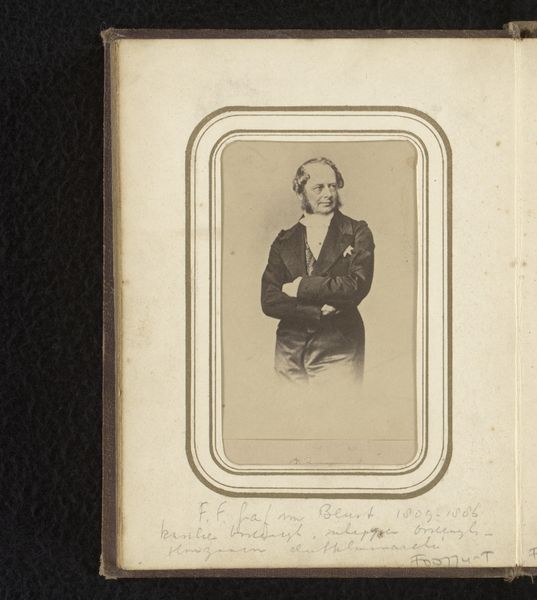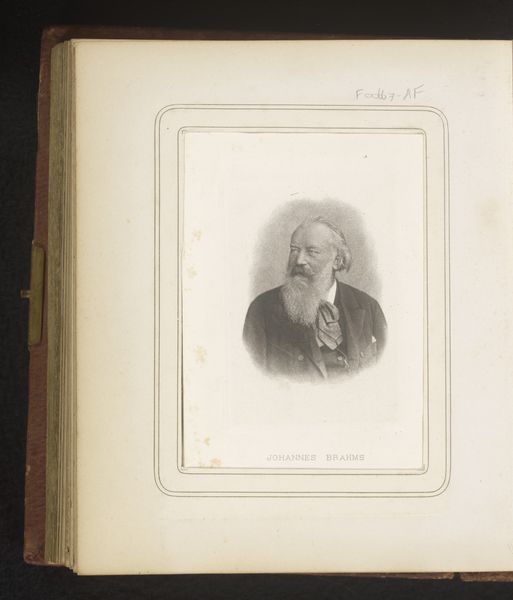
photography
#
portrait
#
photography
Dimensions: height 134 mm, width 112 mm
Copyright: Rijks Museum: Open Domain
Editor: Here we have a photographic reproduction of a self-portrait by Antoine Wiertz, dated before 1868. It’s striking—the figure, presumably Wiertz, is androgynous. What is your interpretation of this piece? Curator: Looking at this through a materialist lens, I’m drawn to the labor inherent in creating photography at this time. It was far from the instant process we know now. The photographer, in this case both subject and operator, needed expertise in chemistry, optics, and careful preparation. The very materiality of the photograph – the paper, the developing agents – speaks to a deliberate and involved practice, defying a separation of 'high art' from skilled craft. Editor: That's fascinating, thinking about the actual labour involved. So, the material challenges influenced the final artwork? Curator: Absolutely. The long exposure times of early photography dictated posing and composition. But consider too the social context. Why a photograph *reproducing* a self-portrait? Was it about wider dissemination, democratizing access to art? Or perhaps, was it about experimenting with this new medium, challenging traditional portraiture and its patrons? Who was the intended audience and what was the economic exchange underpinning its production and distribution? Editor: It does make me reconsider photography's role then, beyond just documentation. So much of his process would involve more than purely aesthetics or portraiture as we expect them to be now. Curator: Precisely. The materials themselves – the silver nitrate, the glass plates, the lighting – all had to be carefully considered. These choices directly impact the photograph’s final form and meaning. By focusing on the 'how' and 'why' of its making, we move beyond surface appearance to grasp a richer understanding of the artist and the artwork. What has this changed in your reading of the photograph? Editor: It reframes the work in my mind; it’s not just a captured image, it is the final physical culmination of so much hands-on labor with intention, and all limited by period technology and social constraints. It highlights the social reach that Wiertz maybe wished he could realize with photography. Curator: Exactly. Recognizing those production-based realities shapes our engagement with it in a much more meaningful manner.
Comments
No comments
Be the first to comment and join the conversation on the ultimate creative platform.
